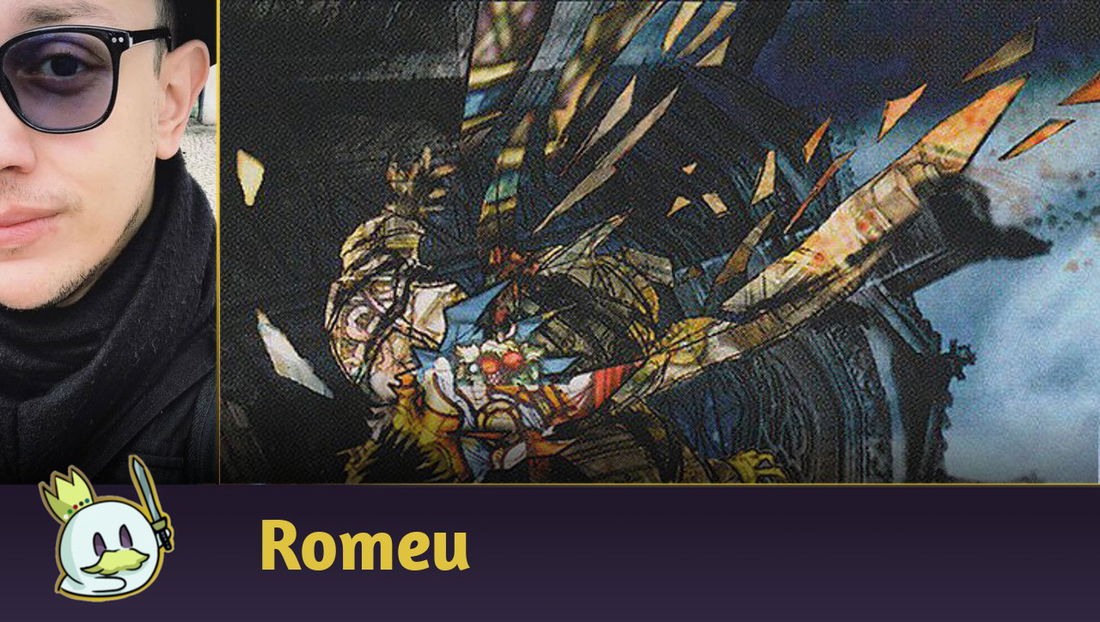With Cori-Steel Cutter revitalizing Spellslinger archetypes across formats, it’s a good time to revisit some strategies that were briefly popular in the competitive metagame before losing their place.
One such was Boros Pia. Born in Pioneer, the deck uses the current red mechanic of exiling cards to be played with Pia Nalaar, Consul of Revival to create an army of flying Thopters — coupled with recent releases like Count on Luck, Painter’s Studio and the aforementioned Cori-Steel Cutter, the archetype returned to competitive play in the Tarkir: Dragonstorm season.
The Decklist
This is the standard list used in Magic Online Leagues in recent weeks. Some slots can be swapped out, removals vary from player to player (some prefer Torch the Tower and Get Lost, others opt for more burn in the maindeck with Lightning Strike), but the core of the list comes down to mixing Cori-Steel Cutter and Pia Nalaar, Consul of Revival with cards that exile the top.
Some players might opt for a 
Playing the Deck
Boros Pia doesn't differ much from the traditional Aggro/Sligh strategy of Prowess decks, but it trades explosive potential for ample resilience in longer games for the amount of “draws” it has that keep it going and guarantees positive board position by triggering Cori-Steel Cutter and Pia Nalaar, Consul of Revival consistently.
Ad
Our early game varies depending on the opponent's first turn: we want to be more reactive against Aggro—our clock is slower than theirs—and more proactive against Midrange and Control to force their resources against beatdown to resolve Count on Luck and Cori-Steel Cutter and/or Pia Nalaar, Consul of Revival.
Once we have these engines in place, our plan revolves around creating as many tokens as possible each turn. We want to secure land drops to sequence more Count on Luck or other exile effects and bury the opponent in a mix of aggressive beatdown and card advantage.
Being in the middle ground between being Aggro and having a lot of value engines is also our biggest weakness: while we can hold the game well against more aggressive archetypes, we can't generate as much value as a Midrange and some of the cards we run are easy targets against Bounce — on the other hand, we have enough tools to force the race against Ramp and Control.
Maindeck

Since the list is based on several cheap spells, we can get the most out of the aggressive potential of Monastery Swiftspear and Slickshot Show-Off.
Slickshot Show-Off also has the Plot ability, which triggers both Pia Nalaar, Consul of Revival and Cori-Steel Cutter the turn after it is plotted. Additionally, it is a relevant clock and one of the best topdecks we can have with one of our Burn spells.

Ad
Pia Nalaar, Consul of Revival requires heavy deckbuilding concessions to work, but it pays off with an army of tokens with Flying and Haste. Combined with cards like Painter’s Studio, it is possible to have one or two of her tokens deal considerable damage to the opponent, making her an immediate threat.
Cori-Steel Cutter is the latest multi-format staple and benefits from any archetype running plenty of cheap spells to define the tempo. Here, it is one of our main win conditions and benefits from the high amount of draw effects available in the list.

Wrenn’s Resolve is the most straightforward variant of exile effects we have. A “draw two” for two mana is precisely the ideal cost to enable Pia Nalaar or Cori-Steel Cutter during the turn.
Count on Luck provides a constant source of card advantage every turn that interacts with Pia Nalaar regardless of what comes from the top. There are games where it is too slow, or where the opponent can handle it easily, and we don’t want to pay three mana to “do nothing”, making it a frequent side out, but indispensable in the maindeck for Game 1.
Painter’s Studio costs more than Wrenn’s Resolve to provide the same effect, while its flip side provides a respectable increase in the game clock for a go wide strategy that puts a lot of tokens in play.

Burst Lightning and Lightning Helix extend the reach of ending games and also interact with creatures early in the game. Helix is essential for holding the first turns against Mono Red or Gruul Mice, while both also grant the flexibility of being played on the opponent to increase the spell count per turn.
Ad
Get Lost is a flexible slot and can be any card for the current Metagame, and in this case, a removal that deals with three categories of permanents for a low cost seems like the ideal tool in Tarkir Standard.

The mana base is composed of the largest amount of untapped duals that we have available in Standard today. In addition, we also have a considerable number of Mountains to enable Sunbillow Verge, and we complement it with two copies of Elegant Parlor to increase the consistency of access to white without harming the land of Aetherdrift.
Sideboard

The extra Get Lost comes in games where we need to interact more with Planeswalkers or remove larger creatures from the board. It is also an essential tool against Bounce, and we should not neglect its importance in responding to an Unholy Annex.
Torch the Tower works against Aggro with small creatures. Typically against Mice variants, but also works against Prowess and other go wide archetypes.
Lithomantic Barrage is the answer against Abhorrent Oculus, Shiko, Paragon of the Way and Beza, the Bounding Spring, not to mention troublesome Planeswalkers like Kaito, Bane of Nightmares.
Ad

Rest in Peace is the standard solution of the format today against graveyard-focused decks. It is our best tool against Omniscience and perhaps the only card that guarantees a clear win in this matchup, since it usually delays the opponent's plans by two or more turns.
Authority of the Consuls mainly plays against other Cori-Steel Cutter decks. Ideally, we'd like cards like Pyroclasm in this slot, but since we rely on tokens to win the game, a cheap sweeper should be replaced by something that significantly slows down the opponent's clock.
Untimely Malfunction has several roles in this list. The first and most obvious is to deal with Cori-Steel Cutter, but we use it instead of Abrade because it can redirect removal from Midranges that target Pia Nalaar, Consul of Revival or Slickshot Show-Off, which can guarantee a win if it destroys the right creature. Its blocker-removal mode also works against Midrange, especially those that don't tend to fill the board with cheap creatures.
Sideboard Guide
Mono Red Aggro
IN

Ad
OUT

Exper Bounce
IN

OUT

Jeskai Oculus
Ad
IN

OUT

Golgari Midrange
IN

OUT
Ad

Azorius Omniscience
IN

OUT

Jeskai Control
IN
Ad

OUT

Wrapping Up
That’s all for today!
If you have any questions, feel free to leave a comment!
Thanks for reading!








— commentaires0
Soyez le premier à commenter